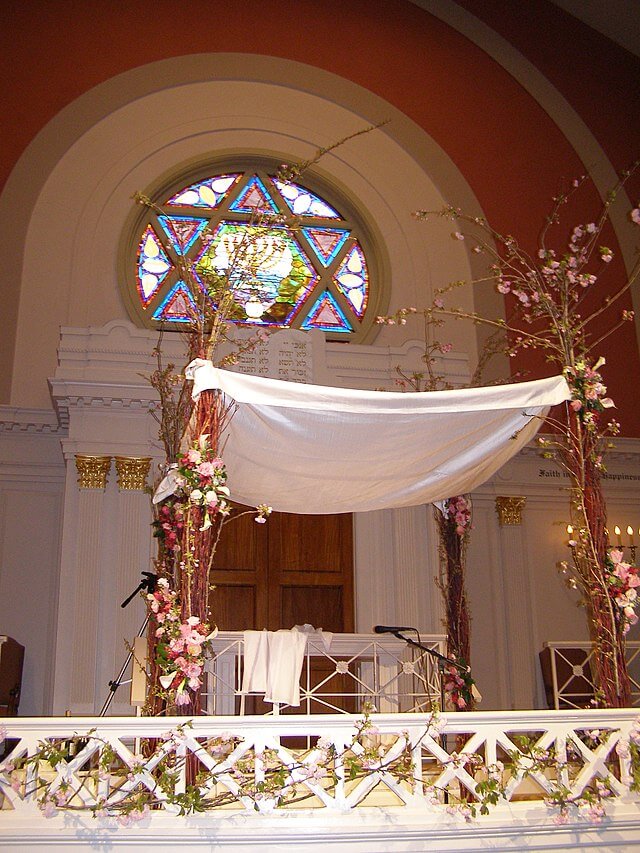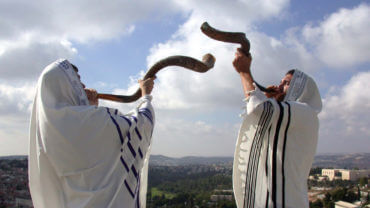
Why Does a Jewish Couple Get Married Under a Chuppah?
Dear Jew in the City,
Why does a Jewish couple get married under a chuppah?
Sincerely,
Ben
Dear Ben,
Thanks for your question. For the answer, let us turn to the Talmudic tractate of Kiddushin,
which deals with the subject of marriage. The very first Mishnah tells us that marriage is
effected through one of three methods: (1) by the man giving the woman money or some
object of value; (2) through a marriage contract; and (3) through an act of physical intimacy*
with the intention that it constitute marriage. Nowadays, we only enact marriage through the
first method, by the groom placing the ring on the bride’s finger, but the other aspects are
represented in the marriage ceremony. While we don’t effect marriage through a document
alone, the kesubah (marriage contract) is used in support of the ring method of marriage. (We
discuss the kesubah at greater length here.)
As far as an act of intimacy, the Sages spoke disparagingly of one who enacted marriage in this
way, and went so far as to punish those who did so. Nevertheless, the efficacy of that method is
reflected in the practice of the couple entering the “yichud room.” Under Jewish law, a man
and woman who are not married to one another are not permitted to be secluded together.
This act of permitted seclusion is meant to highlight their status as newly married. While the
couple doesn’t consummate the marriage in the yichud room, the possibility exists that they
could.
Okay, so this is all well and good, but what does it have to do with the chuppah? Well, the
chuppah is also symbolic of an ancient practice. In Jewish law, marriage takes place in two
stages. The first is called eirusin. In English, this would be called “betrothal,” and it’s more than
mere engagement. A couple who has undergone this stage is quasi-married; they’re not yet
permitted to be intimate, but to sever the relationship would require a divorce. A girl who has
been betrothed continues to live at her parents’ home.
Traditionally, the second stage of marriage, called nisuin, took place a year later. At this point,
the bride would leave her parents and move into her husband’s house. Nowadays, we perform
both eirusin and nisuin at the same time. The chuppah is symbolic of the bride entering the
groom’s domain.
Regular readers may have noticed that my approach to such questions tends to be very literal.
There are those who will give you more spiritual, mystical or allegorical explanations, such as
that the chuppah represents God’s presence over the couple or Avraham’s tent, which was
open to guests on all sides. While many of these interpretations are beautiful and contain
important lessons, I believe they are symbolic explanations after the fact and not reasons for
which the practice was instituted. However, there are “seventy faces to Torah” and one is not
only free, but encouraged, to embrace explanations that speak to them. Nevertheless, I believe
that the explanation I have shared reflects the most historically accurate basis for the
institution of the practice (see Rema EH 55:1).
Sincerely,
Rabbi Jack Abramowitz, JITC Educational Correspondent
Follow Ask Rabbi Jack on YouTube
*To be clear, throughout this article, “intimacy” is used as a euphemism for sexual relations.
If you found this content meaningful and want to help further our mission through our Keter, Makom, and Tikun branches, please consider becoming a Change Maker today.







